It is disappointing, but we agree this is the right decision. More about flattening the curve tomorrow!
Kudos to the Jefferson PUD for listening to their constituents and pursuing some sensible renewable energy generation. By taking advantage of a soon-expiring state program incentivizing community solar, the PUD will harvest some of our local sunshine, make some of its own clean power, and make available an opportunity to invest in solar for folks who may not have their own sunny roof or the ability to install a full array for themselves. By purchasing shares in the Community Solar Array, Jefferson County rate-payers would be able to see the benefits on their own bill for their fraction of ownership of shares in the large array.
Dana Roberts, may he rest in peace, was a local clean energy activist and a PUD commissioner before our PUD became an electricity provider and when our county was still served by the Investor-Owned-Utility PSE. Dana was involved in 2008’s Proposition 1 campaign in which the public vote gave our PUD the authorization to become our own electric utility, negotiate terms with PSE, and purchase their assets. This was a truly remarkable campaign and event, and Dana’s knowledge and tenacity were invaluable resources for our community. Apart from that Dana was a lover of good stories and dark beer, with a dash of revolutionary flair.
It is appropriate that the project at the PUD substation on Kearny St in Port Townsend will be named the Dana Roberts Community Solar Array.
Our company has been privileged to install the community solar array on Washington St in Sequim for Clallam PUD, and also the small community solar array at the Jefferson Airport for the Jefferson Solar Group. With the support of the current state program, projects like this make economic sense and give access to solar to everyone.
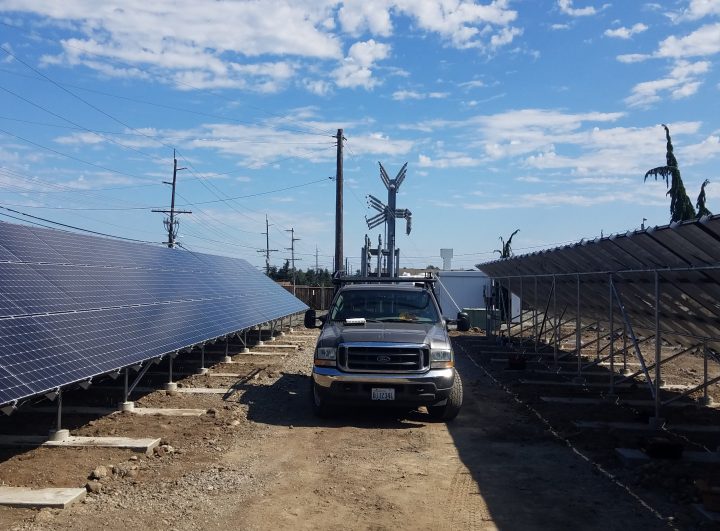
Clallam Community Solar Array, Sequim, WA
30 KW SunPower, Sept 2019
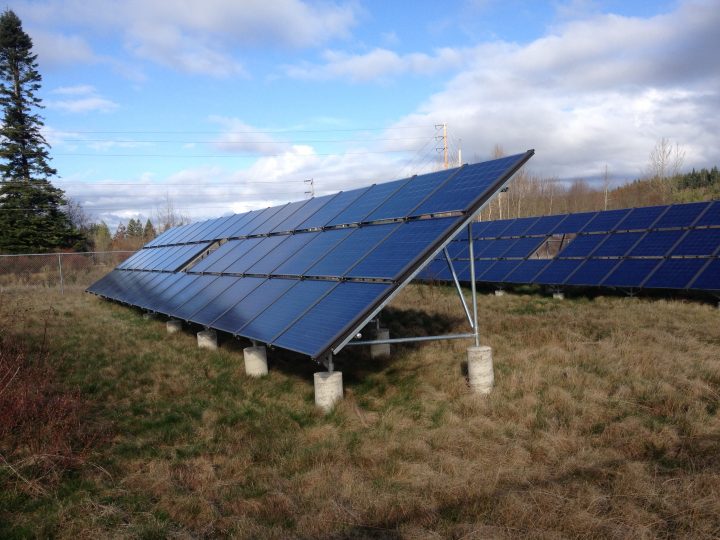
Community Solar Array, Jefferson Intl Airport, Port Townsend, 17 KW Silicon Energy, February 2011
We have enjoyed a 30% federal tax credit for just over 10 years. Sadly this tax credit begins to decrease beginning Jan 1, 2020. For the year 2020, the federal tax credit will be 26%, and in 2021 will be 22%, before the residential Investment tax credit disappears.
At this point, we can no longer make any new commitments to install systems prior to the end of December. We will try to get as many done this year as possible, but our schedule is near full, and we are subject to weather, holidays, and short days this time of year. For customers who sign contracts and provide deposits prior to November 30, if we do not get your project installed by the end of December, we will offer a 6% discount. This is a good deal for those customers as they will recognize a lower overall project cost, and because a portion of that savings is a discount, that means a lower transaction cost initially, rather than waiting for the tax credit next April 15. As we naturally get a lower solar output during the winter, the difference in production based on a January installation versus a December installation is the least significant.
So, if installing solar on your home is something you have considered doing “someday”, perhaps today is your best “someday.” We look forward to hearing from you and installing solar on your home.
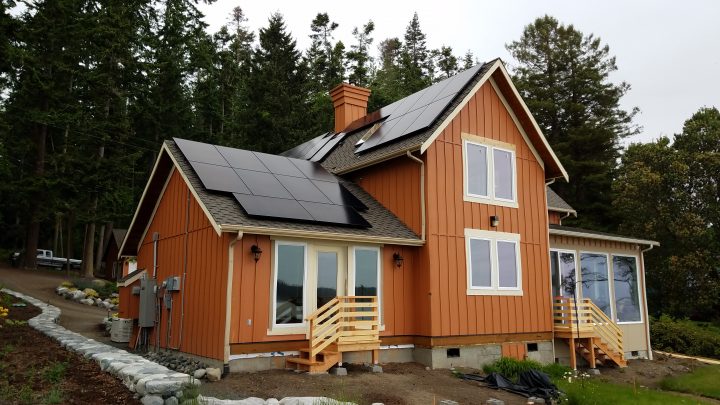
9.5 KW SunPower Array, Sequim Bay, July 2019
Pacific Gas & Electric’s rolling outages are amazing to see occuring, and are frightening for many experiencing them. Up to 700,000 people have been without grid electricity last night and today due to planned outages. I have friends in Sonoma who have experienced recent wildfires caused by PG&E’s negligence and lack of system maintenance, whose nerves are on edge due to the forecast of high wind and dry conditions. Their anxiety is compounded at the moment by these outages, even though they are preventative measures attempting to avoid the wildfires we have seen in the last few years..
https://www.sfgate.com/weather/article/PGE-power-shutoff-phase-two-Bay-Area-14506358.php
The underlying problem is the lack of maintenance by PG&E on their transmission system. This corporation has a history of taking the profits while socializing the risks and losses. As utilities are state supported monopolies, some of the responsibility lies with the California Public Utilities Commission. Unfortunately PG&E’s bankruptcy filing, questions surrounding that, and the plunge in share price does not bode well for the situation improving in the coming years.
https://www.latimes.com/business/story/2019-10-09/pge-bankruptcy-reorganization-plan-judge
This is a situation wherein a grid-tied solar pv system with back-up batteries would prove itself very useful. While batteries are expensive, homeowners who have spent the money are surely grateful at this moment. While we do not have these particular issues at the moment here in Washington, this is a cautionary event from which we can learn.
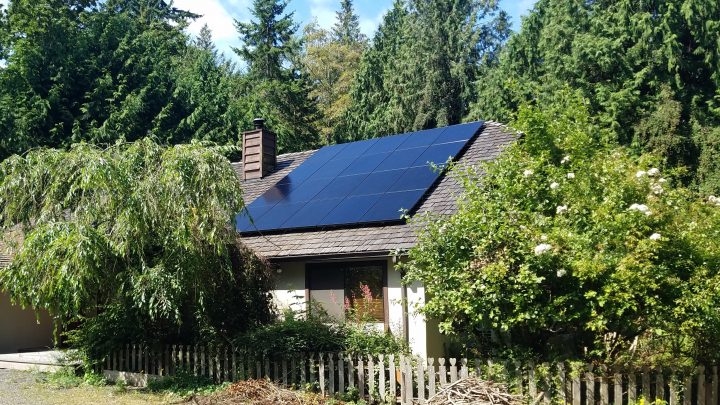
9.8 KW SunPower Solar PV, on PSE grid, Bainbridge Island, July 2019
Clallam PUD’s first Community Solar Array is operational and shares are fully sold out right on schedule. Please take a moment to celebrate, then you can feel free to inquire about subsequent phases. Thank you to Clallam PUD, to the Washington State legislature that made the program possible through Community Solar laws, and to all the individuals who have made this project a success. We are honored to be able to perform this meaningful work. To learn more, visit www.clallampud.net/communitysolar/
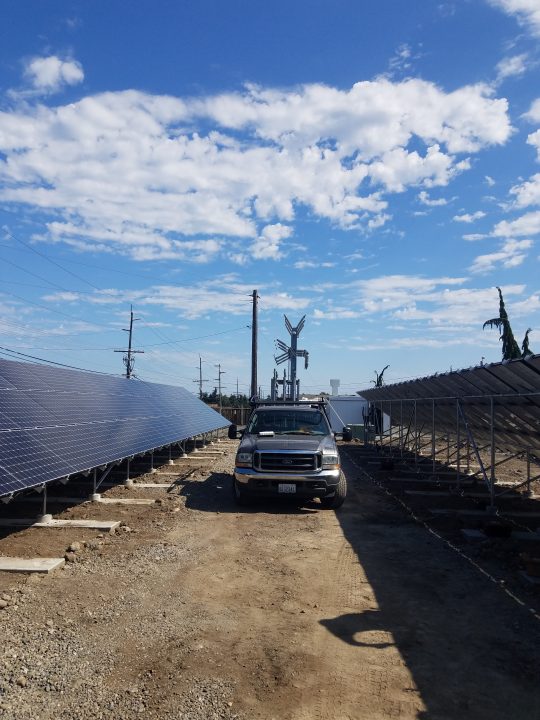
Clallam Community Solar Array in progress, Sept 2019
We have recently had a conversation with someone adversely affected by an unreliable contractor. I have been hearing sad tales like this during the entire 16 years we have been in business – these stories seem to come in waves. Most of these unfortunate events could be avoided by doing a little research and talking to existing happy customers and looking at a company’s track record. Unreliable companies rarely make it two years. While the fact that a company is new should not prevent you from working with them, you should be much more careful with a new company.
I will be forever grateful to Mr Lee Doughty who wrote me a large check in December of 2002, when this solar company was just a gleam in my eye. The trust he placed in me will always be appreciated and cherished. I would hate to think that my lack of other existing customers at the time would have prevented him from working with us – how is a small company supposed to get their first customer otherwise?
Support for earnest young start-ups aside, please do your research when hiring a solar contractor. This goes for any trade, but something about solar seems to attract companies that take advantage of a customer’s good intentions and enthusiasm with some gee-whiz marketing.
Here are some Yelp reviews that collectively tell a distressing story. https://www.yelp.com/biz/offset-solar-liberty-lake Of note, we don’t pay Yelp for our listing, I’m not sure if reviews can be left if we don’t pay for their service, however for existing customers read this and use Yelp (you need an account to provide review) are so motivated, we would appreciate a Yelp review or two or three.
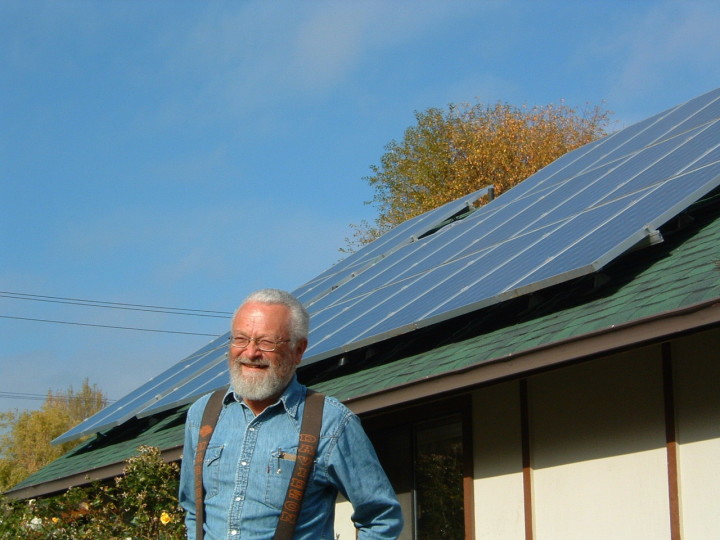
In 2002 Lee was a Solar Pioneer! In 2006, he enlarged his array and had the biggest one in town for a while.
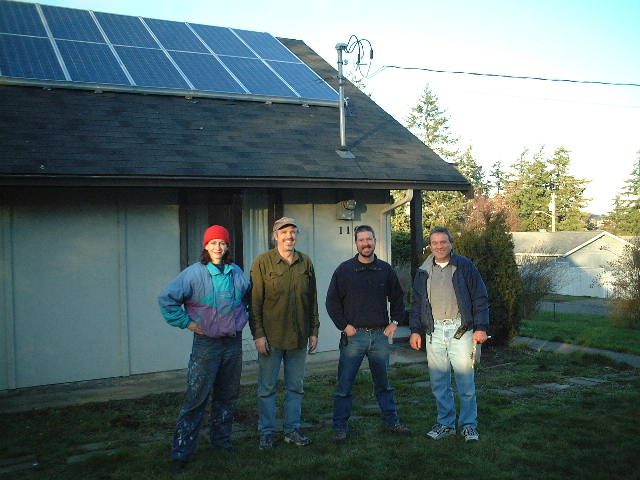
Prior to becoming electrical contractors in 2004, we worked with Puget Sound Solar to install our projects. Ara, Jeremy, Andy, and Emil at Jefferson County’s first Grid-tied PV installation, February 2003.
Wood MacKenzie recently published a study outlining the specific steps that would need to be taken in the next 10 years in order to accomplish a fully renewable energy grid here in the United States. Their article can be accessed here https://www.woodmac.com/news/feature/deep-decarbonisation-the-multi-trillion-dollar-question
The price tag of this ambitious endeavor including grid-level storage and eliminating nuclear plants is $4.5 trillion. This figure is not unattainable, there are several ways to put that into perspective. It is roughly equal to the annual federal budget. It is roughly equal to what we have spent on the “War on Terror” since 2001. It is $165 per household per month over the next 10 years.
Currently about 30% of our domestic energy use is through the electrical grid. The job of going 100% renewable on the electric grid is also made more challenging if we can rapidly shift the 30% of the energy we use for transportation away from nearly all petroleum to nearly all electricity. To maintain perspective, we find it helpful to review the Lawrence Livermore Labs energy charts, recently updated for 2018, see below.
The economic benefits of such an investment would be tremendous. As with solar on rooftops, once the investment is made, the ongoing cost of energy is very, very low (some people say “free”, I don’t agree.) The real world benefits of such a move would be to remove out electricity sector’s contribution to pollution both in terms of carbon, and the smog from nitrogen oxides, and sulfur, mercury and other poisonous emissions from fossil fuel consumption. There is no doubt in my mind that this is a goal we must pursue as quickly as possible, for many reasons.
Of note, Washington’s Gov Jay Inslee shares our perspective and has a very high energy literacy. He has a detailed and credible plan to implement much of what the Woods Mackenzie report outlines, while also analyzing the job creation benefits at the same time. It is worthwhile to take a close look at Gov Inslee’s vision here https://jayinslee.com/issues/evergreen-economy
While these national policy goals are important to consider, we prefer to spend our days installing solar on rooftops here on the Olympic Peninsula. It is something that we can feel good about every day, knowing we are helping our clients save money, decrease their contribution to pollution, and take steps towards a cleaner future.

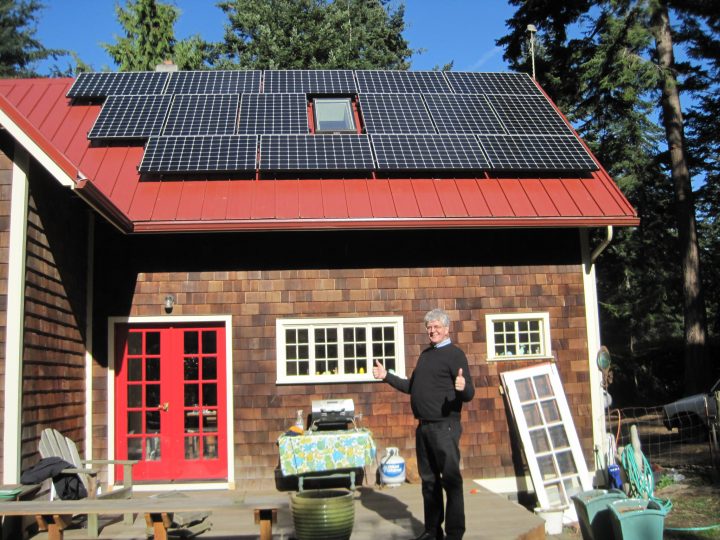
John Hanson, Port Townsend, 2014 – https://www.ptleader.com/stories/john-caesar-hansen,62338?
In the US, 30% of our carbon emissions derive from transportation. The improvements in cost and performance of electric vehicle represent a great immediate opportunity for us to decrease our carbon pollution. EV sales in 2018 increased 81% over the previous year.
Here in the Pacific Northwest, we have an abundance of renewable energy resources and at the macro level, namely the existing hydro system and the significant wind farms installed in the last 15 years. We also have an abundance of sunshine providing great opportunity for distributed generation. When you utilize solar pv to replace your gasoline consumption, you are reaping a tremendous financial gain and also making a significant decrease in your personal carbon pollution.
While these micro-grids are new and not inexpensive, we have begun to perform installations around the edge of this technology. This article talks about the benefits fleet managers at larger corporations are seeing in markets where the electricity cost signals and reliability issues are a little different than our location, however this is probably coming universally. Who will be the first locally to see the benefit of EV fleets and on-site solar generation using a micro-grid?
https://www.greentechmedia.com/articles/read/why-electrified-transportation-needs-microgrids
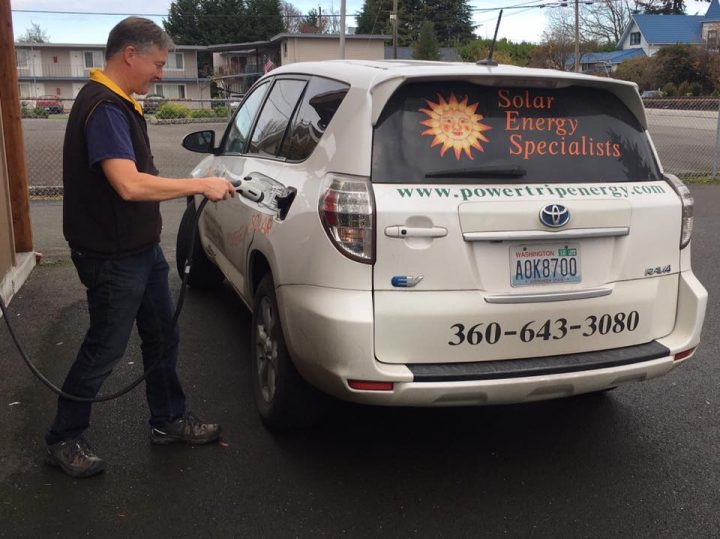
This year was a successful year for solar advocates in the culmination of a multi-year effort to expand and protect Net Metering. Washington’s Net Metering law now requires utilities to accept grid-tied net metered solar pv systems up to 4% of the 1996 peak load, which means there is an 8-fold increase relative to the former 0.5% threshold.
Every utility in which we operate had exceeded this threshold so now everyone has certainty as to what the utilities must do now. This law preserves the rights of individuals to invest in their own solar equipment, and receive fair compensation for the electricity they provide to the utility. Even though all utilities in whose territory we operate but one had continued to provide retail net metering even above the state required threshold, we now have certainty and stability.
Also of note, the annual true up date has been changed from April 30 to March 31, which should protect several of our customers that begin to generate monthly credits as early as April. As it becomes more common for our clients to produce 100% of their own energy over the course of the year, that is a small change which will be helpful.
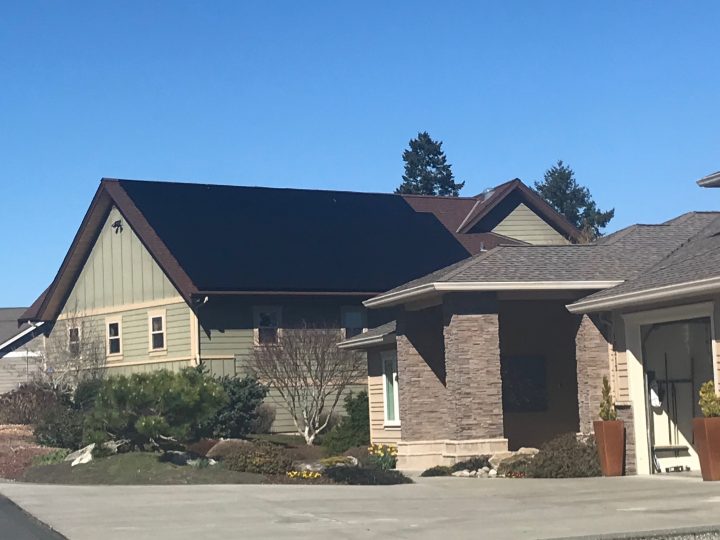
14 KW SunPower on a Keyport Residence, March 2019
If you are a customer of Clallam PUD, and want to buy some solar electricity, but can’t install solar on your own house, you should look into their newly announced Community Solar project. You should probably sign up sooner rather than later because I anticipate this project will be fully subscribed very quickly. This project will be a 30 KW ground-mounted installation in downtown Sequim.
The PUD is offering shares equivalent to 15 watts of solar capacity each for about $60. Individal PUD customers can buy up to 125 shares. The project has a guaranteed 25 year life. The project will be installed by the end of the year, the details as to the equipment or any installation contractor have not been determined. The details are on their website here: https://www.clallampud.net/communitysolar/
At $4 per watt, the shares are roughly equivalent to the price for our roof mounted pv projects, so if you own a home and could afford to do at least a 5 KW system, you should consider installing on your own house rather than participating in this program. However the Community Solar project is ideal if you can not put solar on your own home, or if you have already filled your own roof with solar panels and are not yet making 100% of your own clean energy.

17 KW Community Solar Array, Jefferson Intl Airport, Port Townsend, 2011